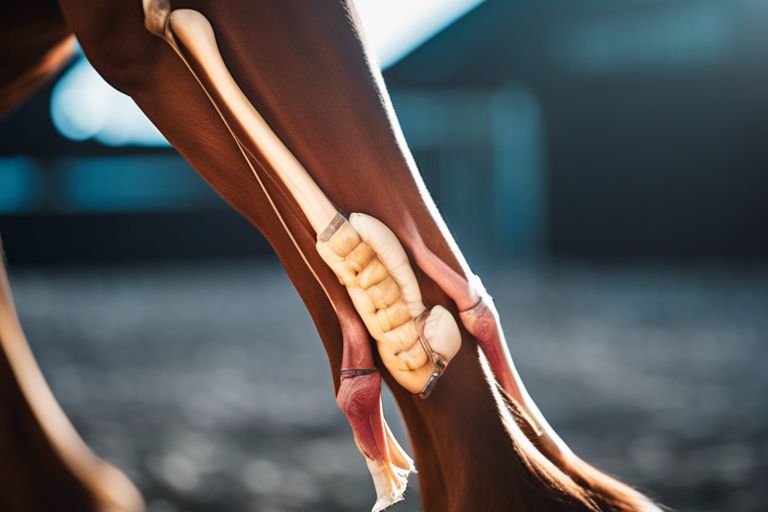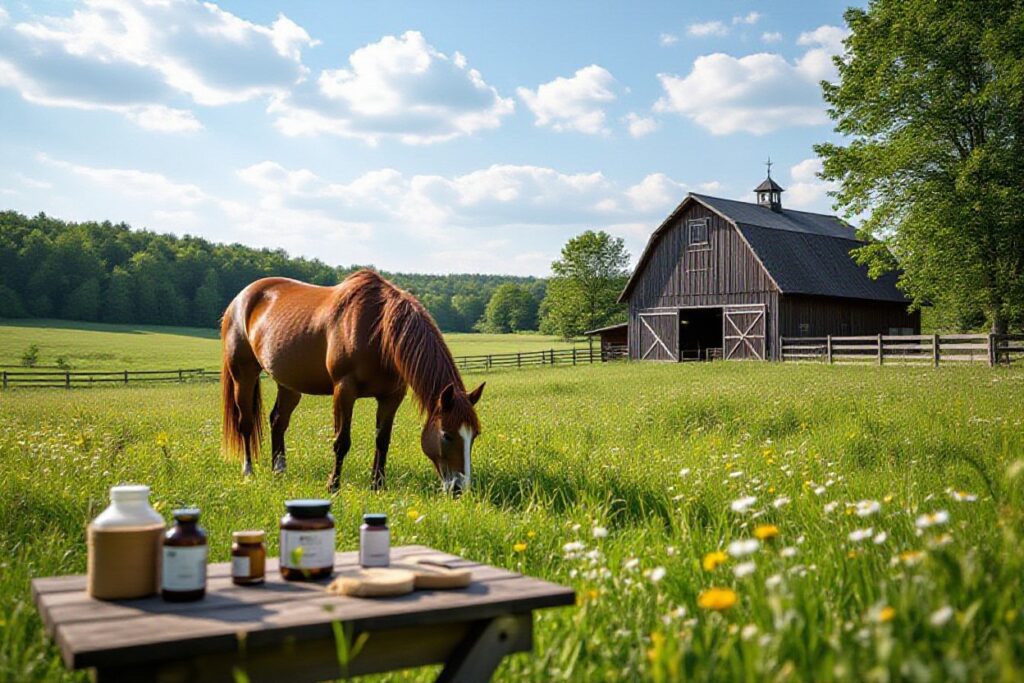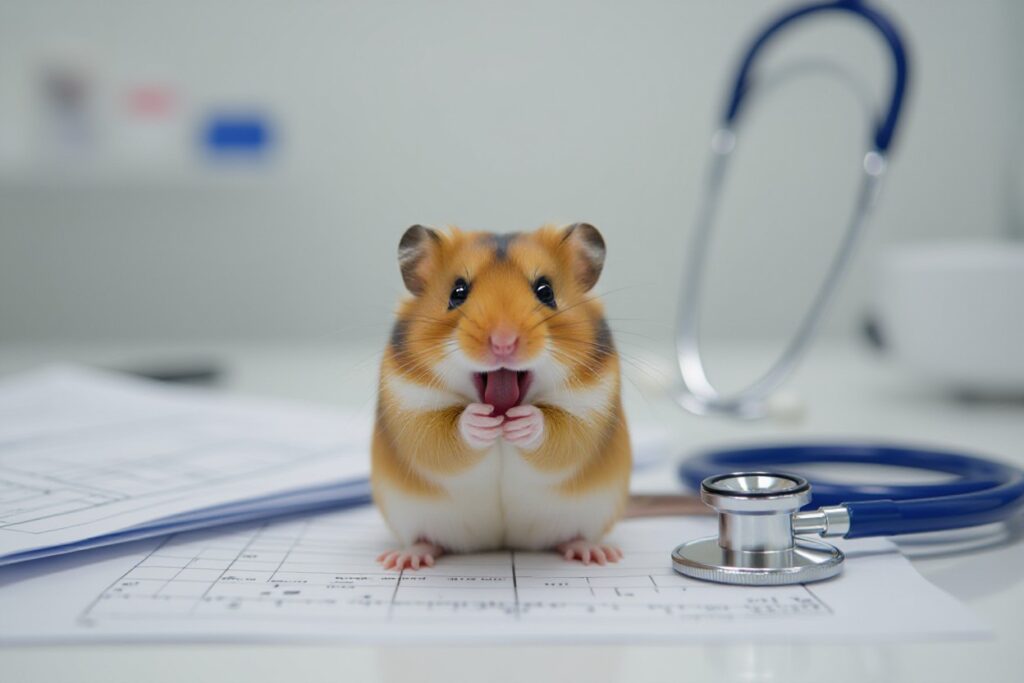Overwhelmed by the health of your beloved horse? Recognizing common horse ailments early can make a huge difference in successful treatment. Whether it’s colic, lameness, or skin conditions, knowing how to spot the signs and treat these issues promptly is key to keeping your horse healthy and happy. In this guide, you will learn what to look for and how to best care for your equine companion.

Understanding Horse Health
For a horse owner, understanding the factors that affect your horse’s health is crucial in ensuring their well-being. Factors such as nutrition, exercise, environment, stress, and genetics can all play a role in determining your horse’s overall health and susceptibility to various ailments.
Factors Affecting Horse Health
- Nutrition: The quality and quantity of the food you provide directly impact your horse’s health.
- Exercise: Regular physical activity is important for maintaining your horse’s muscle tone, cardiovascular health, and mental well-being.
- Environment: Clean and safe living conditions are vital in preventing diseases and injuries.
Assume that by carefully managing these factors, you can significantly enhance your horse’s health and reduce the likelihood of common ailments.
Importance of Regular Check-Ups
Horse health experts recommend regular veterinary check-ups to monitor your horse’s overall well-being. During these check-ups, your vet will assess your horse’s weight, body condition, teeth, and vaccination status. The early detection of any health issues can prevent them from developing into more serious problems.
The insight gained from routine check-ups can help you make informed decisions about your horse’s care and adjust their diet or exercise routine accordingly. This proactive approach to your horse’s health can lead to a longer, happier life for your equine companion.

Identifying Common Horse Ailments
Recognizing Signs of Illness
It is crucial to be able to recognize the signs of illness in your horse early on to ensure prompt treatment. Common indicators of illness in horses include lethargy, change in appetite, abnormal behavior, weight loss, fever, nasal discharge, coughing, and lameness. If you notice any of these symptoms in your horse, it’s crucial to consult with your veterinarian immediately.
How to Conduct a Basic Health Assessment
Assuming the role of your horse’s primary caretaker, you should regularly conduct a basic health assessment to monitor their well-being. This includes checking heart rate, respiration rate, temperature, gut sounds, hydration, and general appearance. By familiarizing yourself with your horse’s normal vital signs and behaviors, you can quickly identify any abnormalities.
For instance, a normal temperature for a horse ranges between 99-101.5 degrees Fahrenheit. Monitoring your horse’s temperature with a thermometer can help detect early signs of infection or illness.
Tips for Monitoring Your Horse’s Behavior
- Establish a routine: Regularly observe your horse during feeding, grooming, and turnout.
- Take note of eating habits: Changes in appetite could indicate an underlying issue.
- Monitor social interactions: A sudden change in behavior towards other horses may signal distress.
Monitoring your horse’s behavior closely can provide valuable insights into their overall health and well-being. It’s crucial to pay attention to any changes in behavior or habits, as these could be early warning signs of illness. Perceiving these changes promptly can help you address potential health issues before they escalate.
Respiratory Issues in Horses
How to Identify Respiratory Problems
Now, when it comes to spotting respiratory issues in your horse, there are a few key signs to watch out for. You may notice abnormal breathing patterns such as wheezing, coughing, or increased respiratory rate. Additionally, discharge from the nostrils, flared nostrils, and reluctance to exercise can all be indicators of respiratory problems in your horse.
Causes and Symptoms of Equine Asthma
For your horse, equine asthma, also known as heaves or recurrent airway obstruction, is a common respiratory issue. This condition is often caused by allergens in the environment such as dust, pollen, or mold. Symptoms of equine asthma can include coughing, increased respiratory rate, nasal discharge, and exercise intolerance. If you notice these signs in your horse, it’s vital to consult with your veterinarian for proper diagnosis and treatment.
Asthma in horses can be a serious and chronic condition that requires careful management. Environmental factors, such as dusty or moldy hay, can exacerbate symptoms of equine asthma. It’s important to provide your horse with a clean and well-ventilated living environment to help reduce the risk of respiratory issues.
Treatment Options for Respiratory Issues
Issues with your horse’s respiratory system require prompt attention and proper treatment. Depending on the severity of the condition, treatment options can include medications, such as bronchodilators or corticosteroids, as well as environmental management strategies to minimize exposure to respiratory irritants. Your veterinarian can recommend the best course of action based on your horse’s specific needs and condition.

Skin Issues in Horses
How to Spot Skin Problems
Noticing changes in your horse’s skin is crucial to catching potential issues early. Inspect your horse regularly for any abnormalities such as irritation, hair loss, scabs, or swelling. Pay attention to any changes in your horse’s behavior like increased rubbing or scratching, as this could indicate discomfort.
Causes and Symptoms of Skin Conditions
Some skin conditions in horses can be caused by a variety of factors such as parasites, allergies, fungal infections, or bacterial infections. These issues can manifest as itchiness, redness, flakiness, or oozing sores. If left untreated, they can worsen and cause further discomfort for your horse.
Problems with your horse’s skin can also be exacerbated by poor grooming practices, environmental factors, or dietary imbalances. It’s important to address these underlying causes to effectively manage skin issues.
Tips for Managing Skin Issues
With proper care and attention, you can help alleviate your horse’s skin problems. Keep your horse clean and dry, use veterinarian-approved shampoos and treatments, provide a balanced diet, and ensure proper turnout. Regularly evaluate your horse’s skin condition and make adjustments as needed.
- Regularly grooming your horse can help prevent skin issues from arising.
- Consult your veterinarian for guidance on the best products and practices for your horse’s specific skin needs.
Little changes in your horse’s routine and environment can make a big difference in managing skin problems. Knowing what triggers your horse’s skin issues can help you proactively prevent flare-ups.
- Recognizing early signs of skin problems and seeking prompt treatment is vital.
- Monitoring your horse’s skin condition regularly can help you track improvements or setbacks.
Digestive Issues in Horses
How to Identify Digestive Problems
Now, your horse’s digestive system is vital to its overall health and well-being. To identify digestive problems, keep an eye out for signs such as changes in appetite, weight loss, diarrhea, or abdominal discomfort. You may also notice behavioral changes, like increased restlessness or aggression.
Causes and Symptoms of Colic
To understand the causes and symptoms of colic, you need to be aware that it is a common digestive disorder in horses. Colic can be triggered by factors such as sudden changes in diet, dehydration, parasites, or stress. Symptoms of colic include pawing at the ground, rolling, looking at the abdomen, sweating, and agitation.
Digestive issues in horses, especially colic, should be taken seriously as they can lead to severe complications if not addressed promptly. Seeking veterinary assistance is crucial as soon as you notice any signs of digestive distress in your horse.
Treatment Options for Digestive Issues
Some treatment options for digestive issues in horses may include administering medications prescribed by your veterinarian, adjusting your horse’s diet, and providing plenty of fresh water. In severe cases, surgery may be necessary to resolve the issue.
It is important to follow your veterinarian’s recommendations closely and monitor your horse’s progress during treatment. With proper care and attention, most digestive issues in horses can be managed effectively, ensuring your horse’s health and well-being.

Hoof Care and Lameness
After your horse’s overall health, one of the most crucial aspects to monitor is their hooves. Proper hoof care is crucial in preventing lameness and other severe issues.
How to Identify Hoof Problems
Careful attention to your horse’s hooves can help you spot potential problems early on. Look out for signs of cracks, splits, abnormal growth patterns, swelling, or sensitivity to pressure. If you notice any of these symptoms, it’s crucial to address them promptly to prevent further complications.
Causes and Symptoms of Lameness
Lameness in horses can be caused by various factors such as injuries, arthritis, hoof imbalances, or even neurological conditions. This condition is typically characterized by an abnormal gait, reluctance to move, swelling, or visible signs of pain. If you suspect your horse is lame, it’s important to consult with your veterinarian for a comprehensive evaluation and treatment plan.
Hoof imbalances and poor trimming practices can contribute to lameness issues in horses. It’s crucial to have your horse’s hooves regularly trimmed and balanced by a professional farrier to prevent these problems.
Tips for Maintaining Healthy Hooves
- Regular hoof cleanings and inspections can help prevent infections and other issues.
- Provide your horse with a balanced diet rich in crucial nutrients to promote hoof health.
- Ensure your horse has proper shoeing to support their hooves and prevent imbalances.
This comprehensive approach to hoof care will help keep your horse’s hooves in optimal condition and reduce the risk of lameness.
Symptoms
Lameness can be a serious issue that affects your horse’s overall well-being and performance. Prompt attention to any signs of lameness and proactive hoof care are crucial in maintaining your horse’s health and preventing long-term problems.
Final Words
With these considerations in mind, you are now equipped with the knowledge to spot and treat common horse ailments. It is vital to always keep a close eye on your horse’s behavior and physical condition to catch any signs of illness early on. By being proactive and seeking veterinary advice when needed, you can ensure your horse receives the proper care and treatment to maintain their health and well-being.
FAQ
Q: What are some common signs of colic in horses?
A: Some common signs of colic in horses include pawing at the ground, sweating, rolling excessively, lack of appetite, absence of bowel movements, and signs of discomfort such as kicking at their stomach.
Q: How can I prevent skin conditions in horses?
A: To prevent skin conditions in horses, ensure their living area is clean and dry, groom them regularly to remove dirt and debris, use fly repellents to prevent insect bites, and provide them with a well-balanced diet to support healthy skin and coat.
Q: What are the symptoms of lameness in horses?
A: Symptoms of lameness in horses include favoring one leg, reluctance to put weight on a particular limb, heat or swelling in a specific area, abnormal posture or gait, and a decrease in performance or willingness to work.
Q: How should I treat a horse with a respiratory infection?
A: If your horse has a respiratory infection, it is important to isolate them from other horses to prevent the spread of the illness. Consult with your veterinarian for a proper diagnosis and treatment plan, which may include antibiotics, rest, and good ventilation in the horse’s living area.
Q: What are some common causes of hoof problems in horses?
A: Common causes of hoof problems in horses include poor hoof care, inadequate trimming or shoeing, wet and muddy living conditions, lack of exercise, and genetic predisposition. Regular hoof care and maintenance are imperative to prevent and address these issues.










